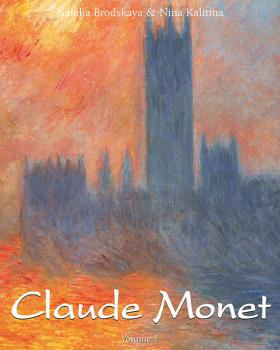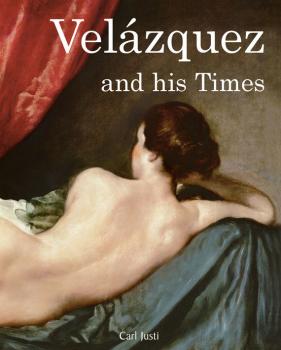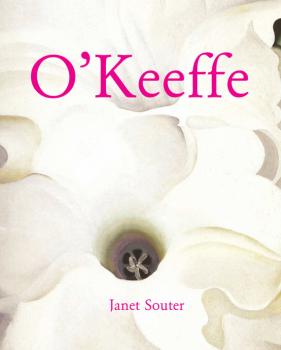Confidential Concepts, Inc.
Все книги издательства Confidential Concepts, Inc.Sex in the Cities. Volume 2. Berlin
In the 1920s, Berlin, once perceived as a puritan city, became the capital of lust and the debauchery of morals. It was in this capricious town that an exceptional museum dedicated entirely to eroticism opened its doors. Abandoning all aspects of voyeurism, the Erotic Museum in Berlin is a magical place in which the imagination of man and the most refined works of art interact. This remarkable book is comprised of more than 350 rare illustrations, and accompanied by a major study written by, history professor, Hans Jürgen Döpp. It covers various aspects of erotica throughout time and continents.
Sex in the Cities. Volume 1. Amsterdam
Amsterdam is not only famous for its canals, nor for its impressive collections of paintings by Rembrandt, Vermeer, and Van Gogh, but also for its museum dedicated to Venus, which welcomes more than 500,000 visitors per year. Travelers come from the world over, rushing to enter this unusual building next to the train station, called “The Temple of Venus”. Gathered since 1985 by Monique Van Marle and her father, this collection of erotic art work is exceptional in the quality of the objects, prints, and very old photographs. Disregarding voyeurism, this museum aims to be a privileged place exhibiting eroticism’s artistic history. The author leads us on a guided tour, supported by a rich and varied iconography.
Claude Monet. Volume 2
With Impression, Sunrise, exhibited in 1874, Claude Monet (1840–1926) took part in the creation of the Impressionist movement that introduced the 19 th century to modern art. All his life, he captured natural movements around him and translated them into visual sensations. A complex man and an exceptional artist, Monet is internationally famous for his poetic paintings of waterlilies and beautiful landscapes. He leaves behind the most well-known masterpieces that still fascinate art lovers all over the world. In this two-volume illustrated work, Natalia Brodskaya and Nina Kalitina invite us on a journey across time to discover the history of Impressionism and Monet; a movement and an artist forever bound together. Specialists of 19 th and 20 th century art, the authors shed light on the birth of modernity in art, a true revolution responsible for the thriving art scene of the 20 th century.
Claude Monet. Volume 1
With Impression, Sunrise, exhibited in 1874, Claude Monet (1840–1926) took part in the creation of the Impressionist movement that introduced the 19 th century to modern art. All his life, he captured natural movements around him and translated them into visual sensations. A complex man and an exceptional artist, Monet is internationally famous for his poetic paintings of waterlilies and beautiful landscapes. He leaves behind the most well-known masterpieces that still fascinate art lovers all over the world. In this two-volume illustrated work, Natalia Brodskaya and Nina Kalitina invite us on a journey across time to discover the history of Impressionism and Monet; a movement and an artist forever bound together. Specialists of 19 th and 20 th century art, the authors shed light on the birth of modernity in art, a true revolution responsible for the thriving art scene of the 20 th century.
Velasquez
Diego Rodríguez de Silva y Velázquez (June 1599 – August 6 1660), known as Diego Vélasquez, was a painter of the Spanish Golden Age who had considerable influence at the court of King Philip IV. Along with Francisco Goya and Le Greco, he is generally considered to be one of the greatest artists in Spanish history. His style, whilst remaining very personal, belongs firmly in the Baroque movement. Velázquez’s two visits to Italy, evidenced by documents from that time, had a strong effect on the manner in which his work evolved. Besides numerous paintings with historical and cultural value, Diego Vélasquez painted numerous portraits of the Spanish Royal Family, other major European figures, and even of commoners. His artistic talent, according to general opinion, reached its peak in 1656 with the completion of Las Meninas, his great masterpiece. In the first quarter of the 19th century, Velázquez's style was taken as a model by Realist and Impressionist painters, in particular by Édouard Manet. Since then, further contemporary artists such as Pablo Picasso and Salvador Dalí have paid homage to their famous compatriot by recreating several of his most famous works.
The Book of Wonder
The most renowned travel story of the Middle Ages has never lost its allure. A story of true wonder, Marco Polo's experiences as well as the reported myths, transport us to the heart of Central Asia, China, Indochina, and the Indian Ocean. The original manuscripts were accompanied with illustrations realised from the few descriptions made by the traveller. Following in the footsteps of Marco Polo, the various illustrations found here will send the reader on the path to discovering the distant lands as we know them today.
O'Keeffe
In 1905 Georgia travelled to Chicago to study painting at the Art Institute of Chicago. In 1907 she enrolled at the Art Students’ League in New York City, where she studied with William Merritt Chase. During her time in New York she became familiar with the 291 Gallery owned by her future husband, photographer Alfred Stieglitz. In 1912, she and her sisters studied at university with Alon Bement, who employed a somewhat revolutionary method in art instruction originally conceived by Arthur Wesley Dow. In Bement’s class, the students did not mechanically copy nature, but instead were taught the principles of design using geometric shapes. They worked at exercises that included dividing a square, working within a circle and placing a rectangle around a drawing, then organising the composition by rearranging, adding or eliminating elements. It sounded dull and to most students it was. But Georgia found that these studies gave art its structure and helped her understand the basics of abstraction. During the 1920s O’Keeffe also produced a huge number of landscapes and botanical studies during annual trips to Lake George. With Stieglitz’s connections in the arts community of New York – from 1923 he organised an O’Keeffe exhibition annually – O’Keeffe’s work received a great deal of attention and commanded high prices. She, however, resented the sexual connotations people attached to her paintings, especially during the 1920s when Freudian theories became a form of what today might be termed “pop psychology”. The legacy she left behind is a unique vision that translates the complexity of nature into simple shapes for us to explore and make our own discoveries. She taught us there is poetry in nature and beauty in geometry. Georgia O’Keeffe’s long lifetime of work shows us new ways to see the world, from her eyes to ours.
German Painting
In a country only unified since 1871, German culture and art is derived from ancient tradition. Studying German painting requires viewing it on a different scale, larger than the current geographical frontiers. From the Middle Ages through to the New Objectivity of the 20th century, we introduce you to the German artists who have marked history: Albrecht Dürer, the Romantic Caspar David Friedrich, and the Expressionist Otto Dix. Original in its themes, German painting always seeks harmony whilst remaining inquisitive.
Frida Kahlo
Behind Frida Kahlo’s portraits, lies the story of both her life and work. It is precisely this combination that draws the reader in. Frida’s work is a record of her life, and rarely can we learn so much about an artist from what she records inside the picture frame. Frida Kahlo truly is Mexico’s gift to the history of art. She was just eighteen years old when a terrible bus accident changed her life forever, leaving her handicapped and burdened with constant physical pain. But her explosive character, raw determination and hard work helped to shape her artistic talent. And although he was an obsessive womanizer, the great painter Diego Rivera was by her side. She won him over with her charm, talent and intelligence, and Kahlo learnt to lean on the success of her companion in order to explore the world, thus creating her own legacy whilst finding herself surrounded by a close-knit group of friends. Her personal life was turbulent, as she frequently left her relationship with Diego to one side whilst she cultivated her own bisexual relationships. Despite this, Frida and Diego managed to save their frayed relationship. The story and the paintings that Frida left us display a courageous account of a woman constantly on a search of self discovery.
Erotic Photography
Erotic photo art has lost much of its exquisite soul since Playboy and other girlie monthlies repackaged the human body for mass-market consumption. Like much painting, sculpture and engraving, since its beginning photography has also been at the service of eroticism. This collection presents erotic photographs from the beginning of photography until the years just before World War II. It explores the evolution of the genre and its origins in France, and its journey from public distrust to the large audience it enjoys today.









